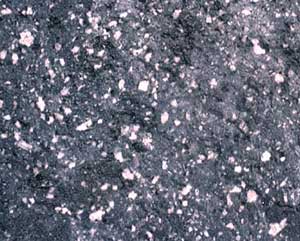 |
| Close view of dacite lava from the May 1915 eruption of Lassen Peak, California. |
Dacite
Did you know?
- Even though it contains less silica than rhyolite, dacite can be even more viscous (resistant to flow) and just as dangerous as rhyolites. These characteristics are a result of the high crystal content of many dacites, within a relatively high-silica melt matrix. Dacite was erupted from Mount St. Helens 1980-86, Mount Pinatubo in 1991, and Mount Unzen 1991-1996.
- The word dacite comes from Dacia, a Roman province found between the Danube River and Carpathian Mountains, where the rock was first described.
Copyright © 2003-2008 Calvin & Rosanna Hamilton. All rights reserved.